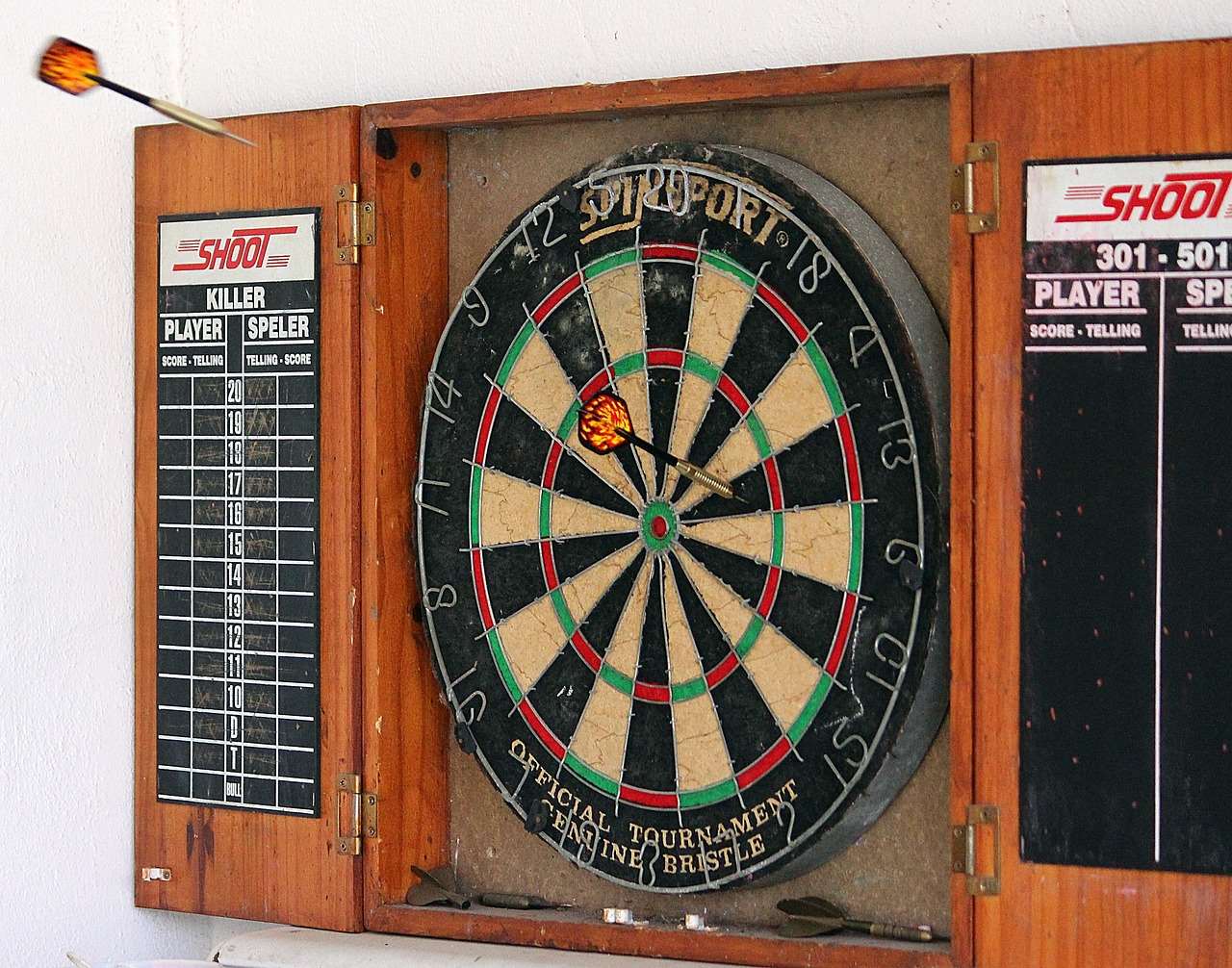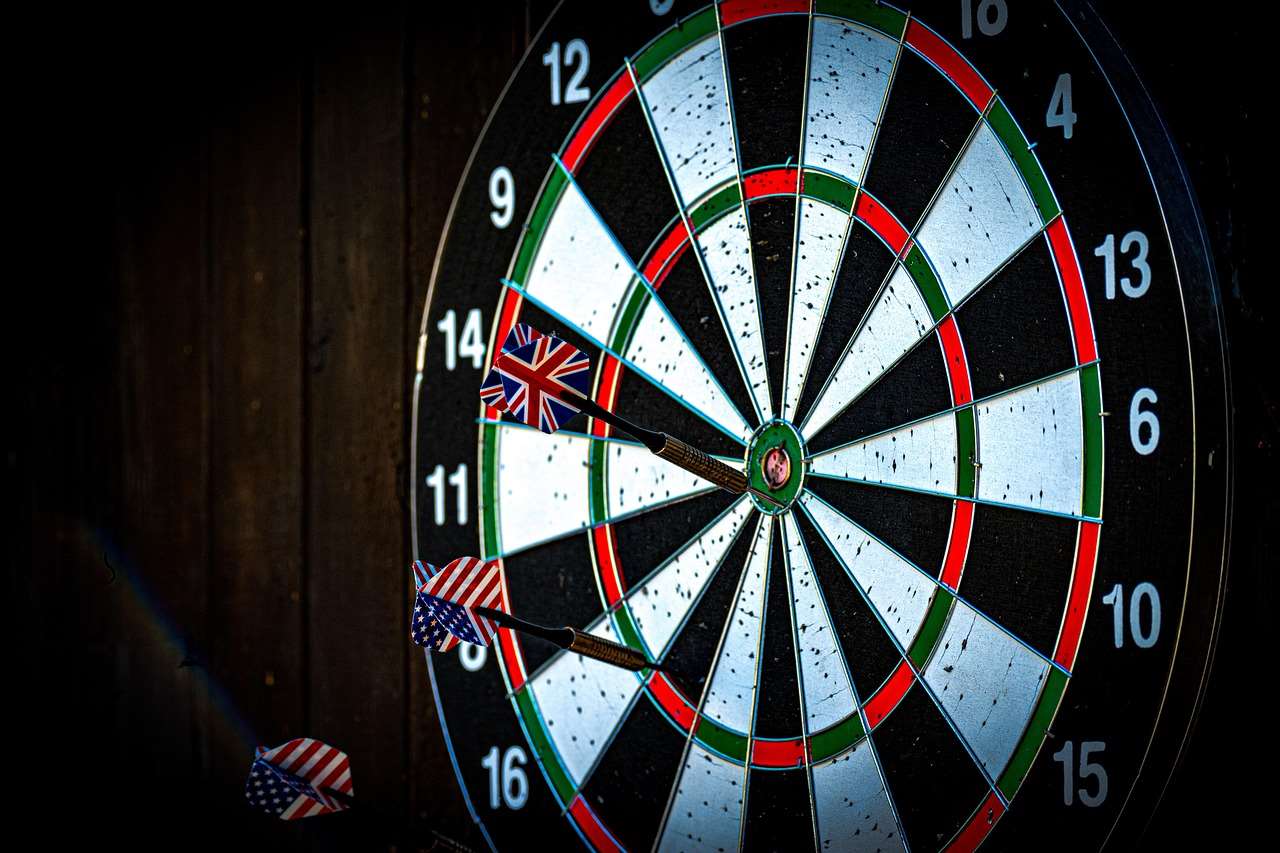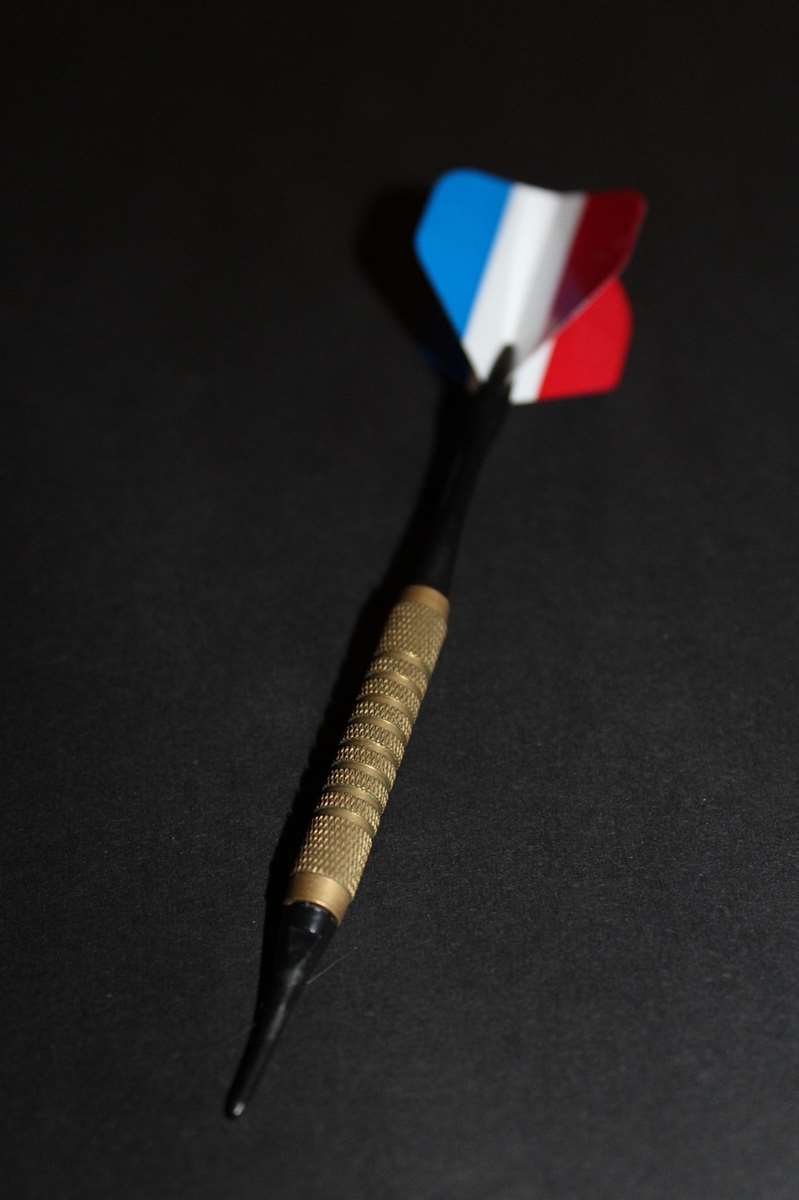Unlocking profit in darts betting often lies in exploiting perceived value, and value betting on leg scores presents a unique opportunity to do just that; by carefully analyzing player statistics and match dynamics, you can identify discrepancies between the odds offered and the true probability of specific outcomes. This article explores the strategies and considerations necessary for successful value betting on leg scores, covering everything from statistical analysis to bankroll management.
⚠️ Still Using Pen & Paper (or a Chalkboard)?! ⚠️
Step into the future! The Dart Counter App handles all the scoring, suggests checkouts, and tracks your stats automatically. It's easier than you think!
Try the Smart Dart Counter App FREE!Ready for an upgrade? Click above!
Understanding the Basics of Leg Betting
Before diving into the intricacies of value betting on leg scores, it’s crucial to grasp the fundamental concepts of leg betting itself. In darts, a leg is essentially a single game within a set, similar to a point in tennis. Betting on leg scores involves predicting the outcome of these individual legs, such as the exact score, the winner, or the number of throws required.
The popularity of leg betting stems from its fast-paced nature and the increased number of betting opportunities it provides compared to betting solely on the overall match winner. This, in turn, creates more potential for finding value bets. The short duration of legs also means that momentum shifts and in-game adjustments can significantly impact the odds, making it an exciting and dynamic betting market.
Common Leg Betting Markets
Several leg betting markets are typically available:
- Leg Winner: Simply predicting which player will win the leg.
- Correct Score: Predicting the exact score in legs won by each player within a set or match (e.g., 3-1).
- Total Legs: Betting on the total number of legs played in a match, often presented as over/under.
- Most 180s in a Leg: Betting on which player will throw the most maximum scores (180) in a specific leg.
- Checkout on a Specific Number: Betting on whether a leg will be won by a player checking out on a particular number (e.g., double 20).
Understanding these markets is the first step towards identifying value opportunities within them. Let’s move on to how you can find value.
Finding Value Betting Opportunities On Leg Scores
Value betting is all about identifying situations where the odds offered by a bookmaker are higher than the implied probability of an event occurring. In the context of value betting on leg scores, this means assessing whether a player’s chance of winning a leg, hitting a 180, or achieving a specific checkout is greater than what the odds suggest.
Several factors contribute to identifying these value bets, including statistical analysis, player form, head-to-head records, and even psychological factors. Here’s a breakdown of key strategies:
Statistical Analysis: The Foundation of Value
Data is your most powerful tool. Analyzing player statistics provides a solid foundation for informed betting decisions. Key statistics to consider include:
- Average Leg Win Percentage: This shows how frequently a player wins their legs. Compare it to their opponent’s percentage.
- First 9 Darts Average: An indicator of how quickly a player puts pressure on their opponent at the start of a leg.
- Checkout Percentage: This measures a player’s efficiency in finishing legs, a crucial factor in determining leg winners.
- 180s per Leg: This statistic is vital for assessing the likelihood of a player hitting maximum scores, relevant to markets involving 180s.
- Average Number of Darts Per Leg: Shows a player’s efficiency in leg wins.
By comparing these statistics for both players, you can identify potential discrepancies between the odds and the actual probability of a given outcome. For example, a player with a significantly higher checkout percentage might be undervalued in the leg winner market. You can also look for information on Promoting Local Darts and how that may influence a player’s local form.

Assessing Player Form and Momentum
Statistics alone don’t tell the whole story. A player’s current form and momentum are equally important. Consider the following:
- Recent Performance: How have the players performed in their recent matches? Are they on a winning streak or struggling for form?
- Performance Under Pressure: How do players perform in crucial legs or sets? Some players thrive under pressure, while others crumble.
- Body Language and Demeanor: Observe players during matches. Are they confident and focused, or do they appear frustrated and distracted?
Remember that darts is a game of precision and mental fortitude. A player’s mental state can significantly impact their performance, especially in the short format of leg betting. Factors that are often overlooked in darts might also impact a player’s game. Consider Darts Culture And Community Guide. A player’s personal life or background can often affect a player’s overall game.
Head-to-Head Records and Matchups
Analyzing head-to-head records between players can reveal valuable insights. Some players consistently perform well against certain opponents, while others struggle, regardless of their overall form. Consider:
- Overall Head-to-Head Record: Who has won the majority of past encounters?
- Recent Head-to-Head Results: How have the players performed in their most recent matches against each other?
- Performance in Specific Venues: Do players perform better or worse in certain venues or tournaments?
- Match Dynamics: What is the typical flow of matches between these players? Are they usually close contests or one-sided affairs?
These insights can help you identify potentially mispriced odds based on historical performance and matchup dynamics. The historical context is often a valuable data point to have when considering Setting Up A Darts Club; this also extends to the players themselves.
Exploiting Live Betting Opportunities
Live betting opens up a whole new dimension of value betting on leg scores. As the match unfolds, the odds fluctuate based on the current score, momentum shifts, and player performance. This creates opportunities to exploit temporary imbalances in the market.
For example, if a player known for strong comebacks falls behind in a leg, their odds might lengthen, presenting a value bet if you believe they are likely to recover. Similarly, if a player starts hitting a string of 180s, their odds for the “Most 180s in a Leg” market might shorten, but if you think they’re likely to continue their scoring spree, it could still be a value bet.
Live betting requires quick thinking and decisive action. You need to be able to analyze the situation rapidly and identify opportunities before the odds adjust. Some of the best darts players are considered the best when they are able to act with Darts League Management Tips, and this idea extends to betting as well. However, it also carries a higher risk, so it’s important to manage your bankroll carefully and avoid impulsive decisions.

Bankroll Management and Responsible Betting
No matter how skilled you are at identifying value bets, bankroll management is essential for long-term success. Without a disciplined approach to managing your funds, even the most astute bettors can quickly deplete their bankroll.
Key Principles of Bankroll Management
- Set a Budget: Determine a specific amount of money you are willing to risk on darts betting and stick to it. Never bet more than you can afford to lose.
- Use a Staking Plan: Implement a staking plan that dictates how much you bet on each leg, typically a small percentage of your overall bankroll (e.g., 1-5%).
- Avoid Chasing Losses: If you have a losing streak, resist the temptation to increase your stakes in an attempt to recoup your losses. This can lead to reckless betting and further losses.
- Track Your Results: Keep a record of your bets, including the stake, odds, and outcome. This will help you identify your strengths and weaknesses and refine your betting strategy.
- Withdraw Winnings Regularly: Take profits off the table. This helps to protect your bankroll and provides positive reinforcement for your betting efforts.
Responsible betting is also paramount. Gambling should be a form of entertainment, not a source of stress or financial hardship. If you find yourself struggling to control your betting habits, seek help from a gambling addiction support organization. A disciplined and responsible approach is important when How To Build A Darts Club, as well as bankroll management.
Advanced Strategies for Value Betting On Leg Scores
Once you have mastered the basic principles of value betting on leg scores, you can explore more advanced strategies to gain an edge over the bookmakers.
Creating Your Own Probabilistic Model
One advanced approach is to create your own probabilistic model to estimate the likelihood of different leg outcomes. This involves assigning probabilities to each player winning a leg based on their statistics, form, and head-to-head record. You can then compare your probabilities to the odds offered by the bookmakers and identify value bets where your estimated probability is higher than the implied probability of the odds.
Building a probabilistic model requires some statistical knowledge and programming skills, but it can be a powerful tool for gaining a deeper understanding of the underlying probabilities and identifying subtle value opportunities. You can even use machine learning algorithms to refine your model over time and improve its accuracy.

Exploiting Bookmaker Biases and Inefficiencies
Bookmakers are not always perfect in their pricing of leg betting markets. They can sometimes be influenced by public opinion, recency bias, or incomplete information. This can create opportunities to exploit their biases and inefficiencies.
For example, a bookmaker might overvalue a popular player in a leg winner market, creating value on the underdog. Similarly, they might underestimate the impact of a player’s form on their checkout percentage, leading to value in the “Checkout on a Specific Number” market.
Identifying these biases and inefficiencies requires a deep understanding of the darts world and the factors that influence bookmaker pricing. It also requires a willingness to go against the grain and bet on unpopular outcomes when you believe they offer value. Knowing Organizing Local Darts League can assist you in finding opportunities, especially in local betting.
Using Hedging and Arbitrage Techniques
Hedging and arbitrage techniques can be used to reduce risk and lock in profits in leg betting markets. Hedging involves placing bets on different outcomes of the same leg to guarantee a profit regardless of the result. For example, you could bet on both players to win a leg at different bookmakers to ensure a profit if either player wins.
Arbitrage involves exploiting price discrepancies between different bookmakers. If one bookmaker offers higher odds on one player to win a leg than another bookmaker offers on the other player, you can bet on both outcomes to guarantee a profit regardless of who wins. These techniques can be complex and require careful calculation, but they can be a valuable tool for experienced bettors.
The Psychology of Leg Betting
The psychological aspect of darts cannot be overstated, and this is especially true in leg betting. Understanding how players react under pressure, handle momentum shifts, and deal with mental fatigue is crucial for making informed betting decisions.
Some players are known for their mental toughness and ability to perform consistently well under pressure. These players are often good bets in crucial legs or sets. Others are more prone to crumbling under pressure, making them risky bets in high-stakes situations. Pay attention to body language and demeanor during matches, as these can provide valuable clues about a player’s mental state. Understanding Recruiting Members Darts League Club, and all of the elements involved, is just one way to understand the psychology of darts.
Consider these aspects:
- Player Confidence: A confident player is more likely to take risks and execute their game plan effectively.
- Reaction to Setbacks: How does a player respond to losing a leg or missing a crucial dart? Do they bounce back quickly or let it affect their performance?
- Mental Fatigue: Long matches can take a toll on players’ mental stamina. Fatigue can lead to errors and poor decision-making.
- Crowd Influence: Does a player thrive in front of a supportive crowd or get rattled by a hostile atmosphere?
By factoring in the psychological aspect of darts, you can gain a significant edge in leg betting markets.

Common Mistakes to Avoid in Value Betting on Leg Scores
Even with a solid understanding of value betting on leg scores, it’s easy to fall into common traps that can erode your profits. Avoiding these mistakes is crucial for long-term success:
- Betting on Emotion: Avoid placing bets based on your personal feelings or biases towards certain players. Stick to objective analysis and rational decision-making.
- Overestimating Form: While current form is important, don’t overreact to short-term fluctuations. Consider the long-term statistics and head-to-head records.
- Ignoring Match Dynamics: Pay attention to the flow of the match and how players are adapting to each other’s strategies. Don’t rely solely on pre-match analysis.
- Chasing Losses: As mentioned earlier, chasing losses is a recipe for disaster. Stick to your staking plan and avoid impulsive bets.
- Ignoring Bankroll Management: Neglecting bankroll management is a surefire way to deplete your funds. Treat your betting like a business and manage your resources carefully.
Future Trends in Leg Betting
The world of darts betting is constantly evolving, with new technologies and trends emerging all the time. Keeping up with these developments is essential for staying ahead of the curve and maximizing your profits in value betting on leg scores.
Some potential future trends include:
- Increased Use of Data Analytics: The availability of darts data is growing rapidly. Expect to see more sophisticated statistical models and analytical tools being used by bettors.
- Integration of Artificial Intelligence: AI-powered algorithms could be used to identify value bets and predict leg outcomes with greater accuracy.
- Virtual Reality Betting: VR technology could create immersive betting experiences, allowing bettors to feel like they are actually at the darts match.
- Blockchain Technology: Blockchain could be used to create transparent and secure betting platforms, reducing the risk of fraud and manipulation.

Conclusion
Value betting on leg scores offers a unique opportunity to profit from darts betting by exploiting discrepancies between the odds offered and the true probability of specific outcomes. By mastering the principles of statistical analysis, player form assessment, head-to-head record analysis, and bankroll management, you can significantly improve your chances of success.
Remember that darts is a dynamic and unpredictable sport, and no betting strategy is foolproof. However, by adopting a disciplined and informed approach, you can increase your edge over the bookmakers and achieve long-term profitability. Start your journey today and refine your value betting strategies!
Hi, I’m Dieter, and I created Dartcounter (Dartcounterapp.com). My motivation wasn’t being a darts expert – quite the opposite! When I first started playing, I loved the game but found keeping accurate scores and tracking stats difficult and distracting.
I figured I couldn’t be the only one struggling with this. So, I decided to build a solution: an easy-to-use application that everyone, no matter their experience level, could use to manage scoring effortlessly.
My goal for Dartcounter was simple: let the app handle the numbers – the scoring, the averages, the stats, even checkout suggestions – so players could focus purely on their throw and enjoying the game. It began as a way to solve my own beginner’s problem, and I’m thrilled it has grown into a helpful tool for the wider darts community.